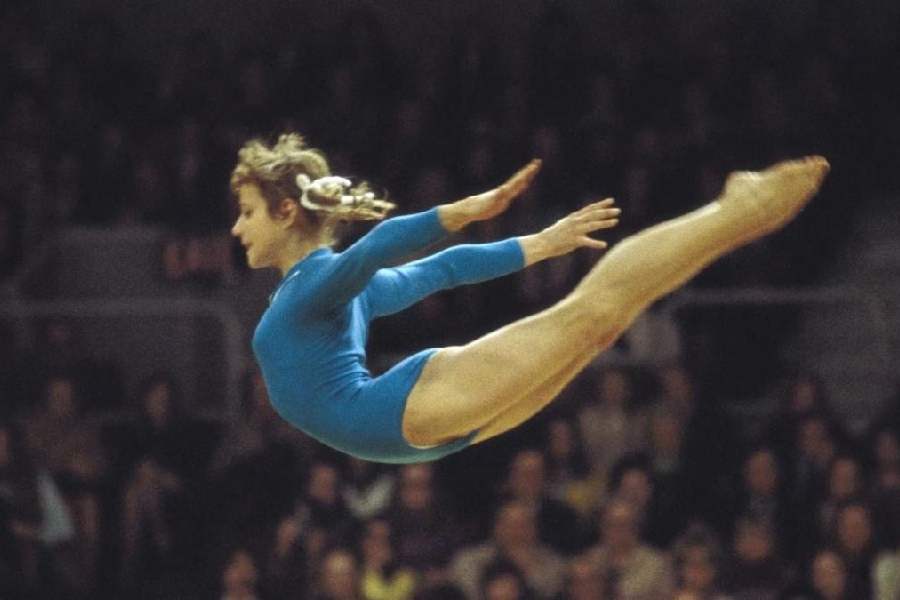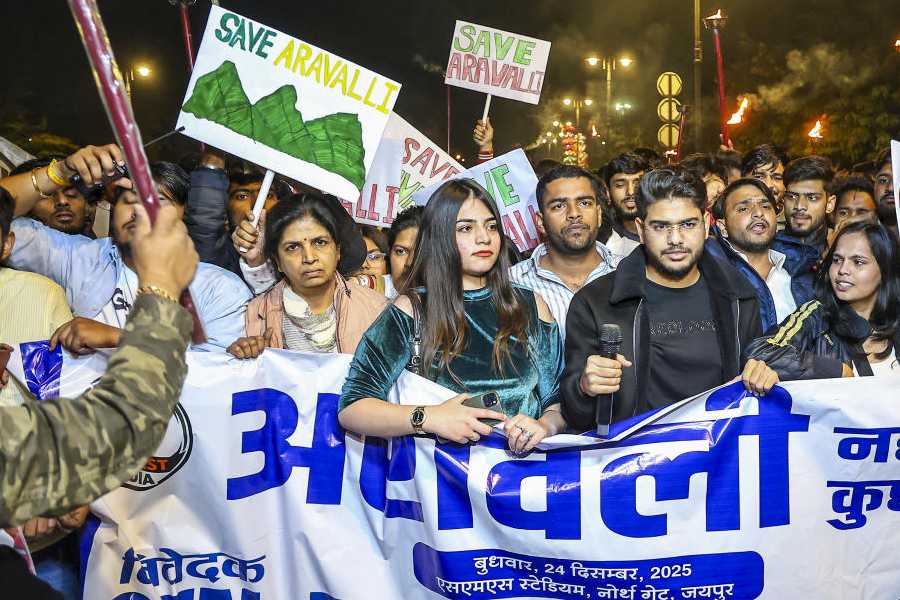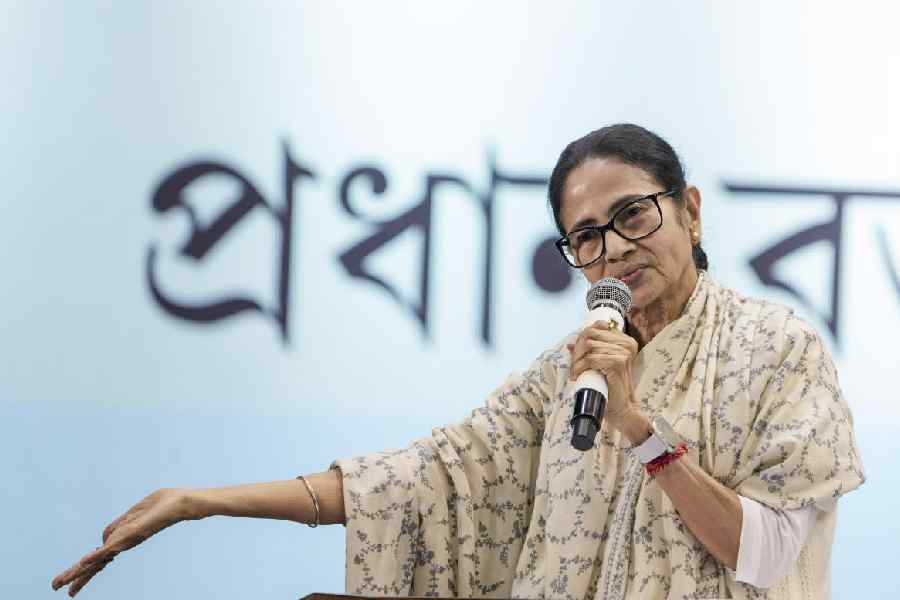There was a time when India’s Olympic medal dream lived only in the performance of its hockey team. The Sixties, which is when I began following the Games, was the decade when India lost its taken-for-granted ownership of the hockey gold. So when the Indian hockey team beat the Australians 3-2 in Paris, it was unsurprising that commentators cited the last time the Indians had beaten the Australians at the Games, more than half a century ago in Munich, 1972.
One of the incidental pleasures of the Games is the way geopolitical changes put sporting nationalism in perspective. Athletes feted as national heroes are subsequently assigned to nations that didn’t exist at the time. So Olga Korbut (picture), the gamine genius who lit up the Munich Games in 1972 and changed women’s gymnastics forever, was actually from Belarus which wasn’t represented at the Olympics as a sovereign state till the 1990s.
Korbut’s life and career testify to the beauty and horror of competitive sport. No one did more to transform gymnastics from a sport led by older, more stately gymnasts like Ludmilla Tourischeva to one dominated by teenaged sprites like Nadia Comaneci, Nellie Kim and Korbut herself who performed risky, gasp-inducing routines with seeming effortlessness.
Korbut metaphorically begat the great and diminutive Simone Biles. Both performed risky, life-threatening routines. Korbut did the Korbut flip or the Dead Loop on the uneven bars (the routine was later banned as too dangerous) and Biles is legendary for being the only woman to successfully attempt the spectacular (and risky) Yurchenko double pike vault. Their routines offer couchbound slugs like us moments of second-hand transcendence.
But their careers also testify to the exploitative and predatory character of modern sport where the search for sporting glory gives older men unchecked power over young women. Long after Korbut migrated to the US, she testified to the sexual abuse she and other gymnasts were subjected to by her Soviet coach, Renald Knysh. He denied the allegations but when Korbut repeated them in 2018, contemporaries of hers, who had also been trained by Knysh, also spoke of being sexually abused by him. In much the same way, Biles bore witness to the way in which Larry Nassar, the US gymnastics team doctor, had systematically abused hundreds of young girls over several years in the full knowledge of the United States Olympic & Paralympic Committee and even the FBI.
Biles and her peers were given the opportunity of testifying in front of the Senate Judiciary Committee and Nassar is now in jail where he belongs. In the analogous Indian case, when Vinesh Phogat and seven other women wrestlers accused the then president of the Wrestling Federation of India, Brij Bhushan Sharan Singh, of sexually abusing them (a charge that he denies), Phogat’s public protest along with fellow Olympians, Sakshi Malik and Bajrang Punia, was stonewalled by a political and sporting establishment keener on coddling a neta than protecting the young women placed in its care, who had represented their nation with distinction. The difference between first and third world establishments isn’t virtue; it is accountability.
Manu Bhaker, the shooter who has achieved the unprecedented feat (for an Indian athlete) of winning two medals at the Paris Olympics, was amongst those who spoke out in solidarity with Phogat in 2023 when she undertook a public protest in Delhi. “I am deeply pained,” she wrote, “to see the situation of my fellow athletes (Wrestlers) who have made the nation proud many times by winning medals and are now sitting on the roads to seek justice. I strongly stand with my fellow athletes and request for appropriate action on their complaints.” Indian politicians, including the prime minister, will rush to associate themselves with Bhaker’s sporting success without a twinge of self-awareness.
Watching Swapnil Kusale, Bhaker’s fellow shooter, win bronze in the 50-metre rifle event was an extraordinary viewing experience. The hyper-modernity of the shooting equipment — rifles bristling with scopes, sights and enigmatic projections — was at odds with the costumes rifle shooters wore which looked like medieval armour rather than contemporary sporting gear. Unyielding jackets made of rigid leather and canvas and stiff trousers that barely flexed at the knee made the shooters move like badly animated puppets. The commentators finally explained that the point of this straitjacketing was to immobilise them and minimise involuntary movement as they aimed. The stillness of the competitors as they cradled their guns and nuzzled their stocks, and the deliberation with which they loaded tiny slugs into baroquely complicated rifles, made this the ultimate anti-spectacle, more Zen trance than competition.
Ironically, the easy availability of every event, both live and as highlights, diluted the intensity of the viewing experience. Watching one discipline in gymnastics while another proceeds in the background, or watching high-jumpers pause to make way for runners to use the track, reminds you that Olympic competition, like real life, has to be edited for real drama. Fifty years ago, the Games had to be followed in print. If you were lucky, a year after they were over, a two-hour film showcasing the highlights of the Games would play in theatres in your city.
I remember watching Mexico 1968 in 1969 in the old Shiela Theatre near New Delhi Railway Station. It’s a wonderful film, two-and-a-half hours long, available on YouTube to watch for free. Unlike the generic angles of television coverage, this is shot like a proper movie, with close-ups, freeze frames and a splendidly retro voice-over shamelessly stoking the excitement. What an Olympiad it was! Thanks to Mexico City’s altitude, explosive events like jumps and sprints produced astonishing world records: Jim Hines’ sub-ten second 100 metres time and Bob Beamon’s flying long jump that didn’t so much break the previous world record as pulverise it. Dick Fosbury revolutionised the high jump by going over the bar backwards and Tommie Smith and John Carlos scandalised the world with their Black Power salute on the podium. The film shows all of it and because it has a beginning, a middle and an end, it stays lodged in the mind.
It’s hard not to see that the Games now aren’t what they used to be. Not on account of the athletes but simply because the cost of this Roman circus and the even larger carbon cost of mounting a global extravaganza in this time of climate change haunt the Olympic project. In a world where sporting spectacle is constantly available online, the standalone splendour of the Olympics no longer exists. Right on cue, seizing the dying day, the Union minister, Anurag Thakur, announced that India will bid to host the Summer Games in 2036.
mukulkesavan@hotmail.com











